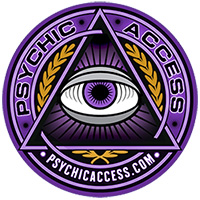Uncover Astonishing Insights Regarding Our Psychic Readings
 Did you know? The demand for psychic readings continues to grow as individuals seek insights beyond the physical world and answers that resonate with their inner selves.
Did you know? The demand for psychic readings continues to grow as individuals seek insights beyond the physical world and answers that resonate with their inner selves.
As per a recent study from Pew Research Center, 30% of adults in the U.S. consult psychics and astrologers a minimum of once a year. Fourteen percent do this monthly, and roughly 6% engage with psychics on a weekly basis. From our perspective, these statistics reveal more than just casual curiosity or entertainment. They signal a cultural transition toward accepting psychic reading as a significant resource for navigating life.
Psychic readings are increasingly valued as essential tools for self-exploration, emotional healing, and spiritual development. In our fast-paced and unpredictable world, individuals are seeking out psychics and mediums for connection, insight, and reassurance.
This growing fascination is more than just a passing trend; it signifies a larger spiritual awakening. As mindfulness practices, mental health awareness, and holistic wellness gain traction, people are revisiting ancient spiritual teachings through contemporary lenses. Psychic readings create a sacred space for contemplation, self-exploration, and probing life’s profound questions. Rather than being a means to escape reality, they offer a way to interact with it more consciously, with spirit and intuition acting as trusted companions.
As more individuals acknowledge the metaphysical aspects of their lives, psychic readings are emerging as crucial guides on the journey toward wholeness and self-awareness. There are several key factors contributing to this, along with several surprising truths about psychic readings that are often overlooked.
Communication is merely an exchange of information, but connection is an exchange of our humanity ~ Sean Stephenson
We engaged our team of expert psychics and mediums to unveil what makes their sacred craft so transformative and sought-after in today’s digital age. Here’s what their devoted clients seek and what renders their work so powerful in modern times:
✵ Every Reading Is Uniquely Aligned To You. No two readings ever resemble one another. Each session is as distinctive as the individual experiencing it. Our dedicated clients come to us seeking a stronger connection with themselves, their life journey, and the unseen forces that guide their existence. A successful reading provides reassurance, clarity, and empowerment rather than shock. Time and again, we have observed clients departing with a refreshed sense of peace, bravery, and direction. This inspires us to relentlessly pursue this work. We are available daily to meet that need with compassion, accuracy, and presence.
✵ It’s Not Just About Prediction, It’s About Empowerment. One of the most significant changes we’ve witnessed in recent years is that individuals are no longer merely in search of quick fixes or simplistic forecasts. They seek to comprehend the deeper aspects of their lives and relationships. We assist clients in discovering possibilities, patterns, and potential avenues, enabling them to make thoughtful choices and wise decisions from a standpoint of self-empowerment and spiritual insight.
✵ Energy Speaks When Words Cannot. Occasionally, new clients call uncertain of what to inquire about, but their energy conveys a wealth of information. Psychics and mediums interpret the mental, emotional, and spiritual energies beneath the surface. For us, the unsaid and unseen holds the key to true healing or the vital insight needed.
✵ Distance Doesn’t Diminish The Energy. Many individuals are astonished by the potency of remote readings. From our perspective, energy and spirit transcend all boundaries. We have worked with clients across various continents and time zones for over 20 years, and the connection remains as powerful as if they were physically present with us. Our platform offers clients seamless access to real-time support, regardless of their location.
✵ Openness Creates The Strongest Connections. When a client approaches us with an open heart and mind, we are able to delve much further and deeper. Clients who participate in a psychic session with authenticity, curiosity, and honesty generally experience the clearest insights and the most significant transformation. Readings are co-creative journeys, where intention and mindset play crucial roles. This is also why being a boutique VIP service holds importance. We foster heart-to-heart connections rooted in trust and integrity with our returning clients.
✵ Clients Are Exploring More Than Love & Career. While many clients seek assistance with relationships, work, or their life’s purpose, we are witnessing a rise in individuals wanting to heal generational wounds, comprehend soul contracts, revisit past lives, or deepen their spiritual awakening. Clients are posing larger, more profound, and often bold questions, and we feel privileged to assist them in uncovering answers.
✵ Spirit Is Always With You. Our readings are influenced by the love and light of spirit guides, angels, departed loved ones, ancestors, or other divine allies and guardians, based on each reader’s unique philosophy or beliefs. This connection allows us to provide substantial support, broadened perspectives, and profound healing and solace, which our clients cherish and depend on. Each reading serves as proof that no one is ever truly alone on their path.
✵ Not All Psychics Are The Same, And That’s Part of the Magic. Just like any other field, psychics come in various forms, each possessing distinct abilities and specialties. While some psychics may focus on love and relationships, others might emphasize career and finances. It’s essential to research and find a psychic who resonates with you and can offer the guidance and insights you need. Don’t hesitate to ask questions and rely on your intuition in choosing a psychic to collaborate with.
The only way to gain power in a world that is moving too fast is to learn to slow down. The world we want will not emerge from electronic speed but rather from a spiritual stillness that takes root in our souls ~ Marianne Williamson
Ultimately, we want to assure you that we take our calling seriously. Every reader at Psychic Access has been thoroughly vetted for skill, accuracy, and ethics. We refrain from offering fear-based advice or unrealistic promises. Our Golden Rules protect your energy, privacy, and trust because you rightfully deserve it.
Since 2005, PsychicAccess.com has established itself as a reliable name in online spiritual services. Our mission is to offer the highest quality psychic insights, mediumship, and transformational guidance in a secure, confidential, and affordable setting. We proudly uphold principles that prioritize your well-being.
Unlike other platforms that undertake minimal vetting, Psychic Access sets a gold standard. We prohibit unethical practices such as curse removal and spell casting, enforcing strict boundaries to maintain privacy and professionalism.
Whether you’re dealing with heartbreak, searching for your life’s mission, or simply seeking to connect with your higher self, our team at PsychicAccess.com is ready to assist you. Our platform transcends a simple directory; it serves as a haven for genuine connection and conscious empowerment.
We will continue to accompany you as you uncover the deeper truths that are waiting for your heart and soul.
|
Receive daily doses of psychic wisdom and spiritual insight from our gifted advisors at PsychicAccess.com. We publish a new blog article every day on our official blog site at PsychicBloggers.com. All of our posts are crafted specifically for your enlightenment and personal growth by one of our talented team of professional psychics. We are dedicated to sharing our knowledge and experience while ensuring you are updated with the latest information on psychic phenomena, divination, metaphysics, energy work, spiritual life design, the paranormal, and esoteric practices. If you’re joining the Psychic Access wisdom community for the first time, your initial reading with us is FREE with any available psychic of your choice. Yes, our confidence in our service is that strong! Join us today at PsychicAccess.com. |
Psychic readings have captured the interest and fascination of many individuals. Regardless of whether you are a skeptic or a believer, the appeal of connecting with the unknown and obtaining foresight into the future is undeniable. But did you realize that there are some unexpected facts related to psychic readings that you might not know? Continue reading to uncover some of the lesser-known elements of this mystical craft.
1. Psychic readings extend beyond mere future predictions
Although many associate psychic readings with forecasting the future, they can encompass much more. Psychics have the ability to offer guidance, insight, and clarity across various topics like relationships, careers, health, and personal development. By harnessing their intuition and connecting with your energy, a psychic can facilitate a deeper comprehension of yourself and your surroundings.
2. Psychics utilize a variety of tools to enhance their readings
Contrary to common belief, psychics do not solely depend on their intuition for readings. Many psychics incorporate tools such as tarot cards, crystals, pendulums, and astrological charts to elevate their abilities and deliver more nuanced and accurate readings. These instruments assist psychics in tapping into diverse energies and gaining greater insight into the messages they receive.
3. Psychic readings can be conducted remotely
Owing to advancements in technology, psychic readings now take place remotely, enabling individuals to connect with psychics from virtually anywhere around the globe. Whether you favor phone readings, video conferences, or email sessions, there is an abundance of options for those who cannot meet with a psychic in person. Remote readings can be equally as precise and enlightening as in-person sessions, so feel free to explore them if you’re curious about what lies ahead.
4. There is a diversity among psychics
Similar to any profession, psychics embody various forms, each endowed with distinct talents and areas of expertise. Some psychics may concentrate on love and relationships, while others may specialize in careers and financial matters. It’s crucial to research and seek a psychic whose approach resonates with you and can provide the insight and guidance you desire. Do not hesitate to ask questions and trust your instincts when selecting a psychic to partner with.
5. Psychic readings can be a profound tool for personal development
While psychic readings can provide foresight into the future, they also serve as powerful instruments for personal growth and self-exploration. By gaining deeper insights into yourself and your life trajectory, you can make more informed choices and take charge of your destiny. Whether you encounter significant life decisions or are simply seeking clarity on a specific concern, a psychic reading can afford you the perspective necessary to proceed with assurance.
In conclusion, psychic readings present a captivating and multifaceted practice that can offer profound insight and guidance across various realms. Whether you find yourself skeptical or a firm believer, the potency of connecting with a psychic and deepening your understanding of yourself and your surroundings is irrefutable. So why not experience it for yourself and uncover the surprises that await you in your next psychic reading? Continue reading
















